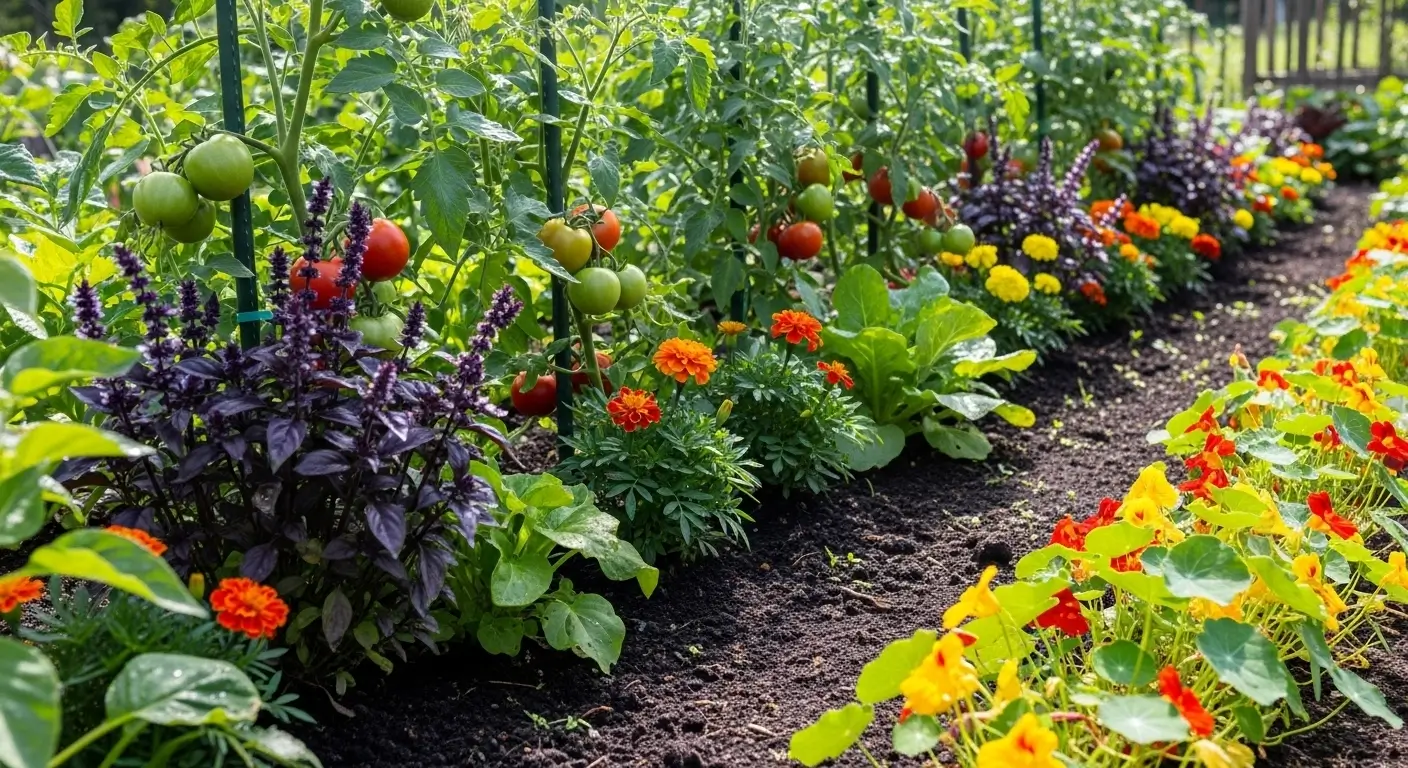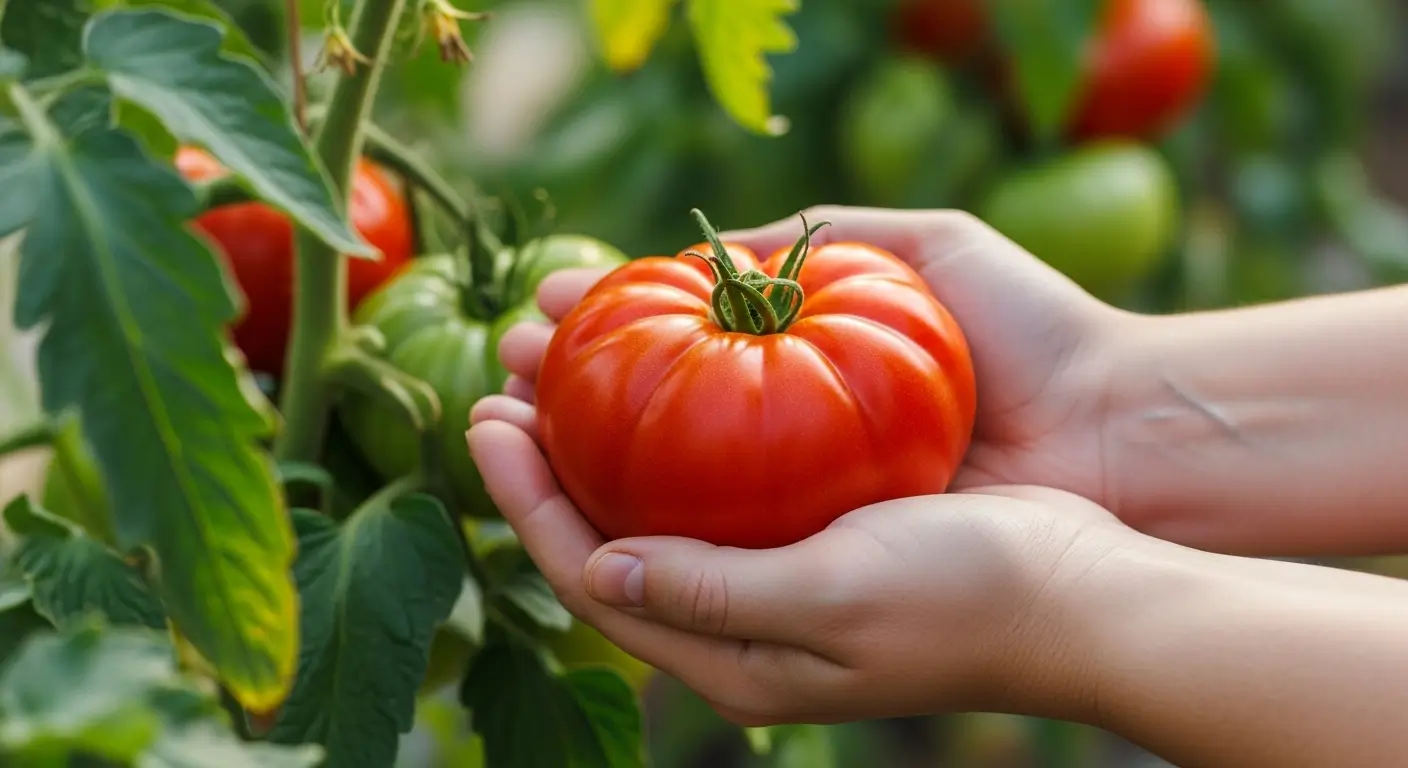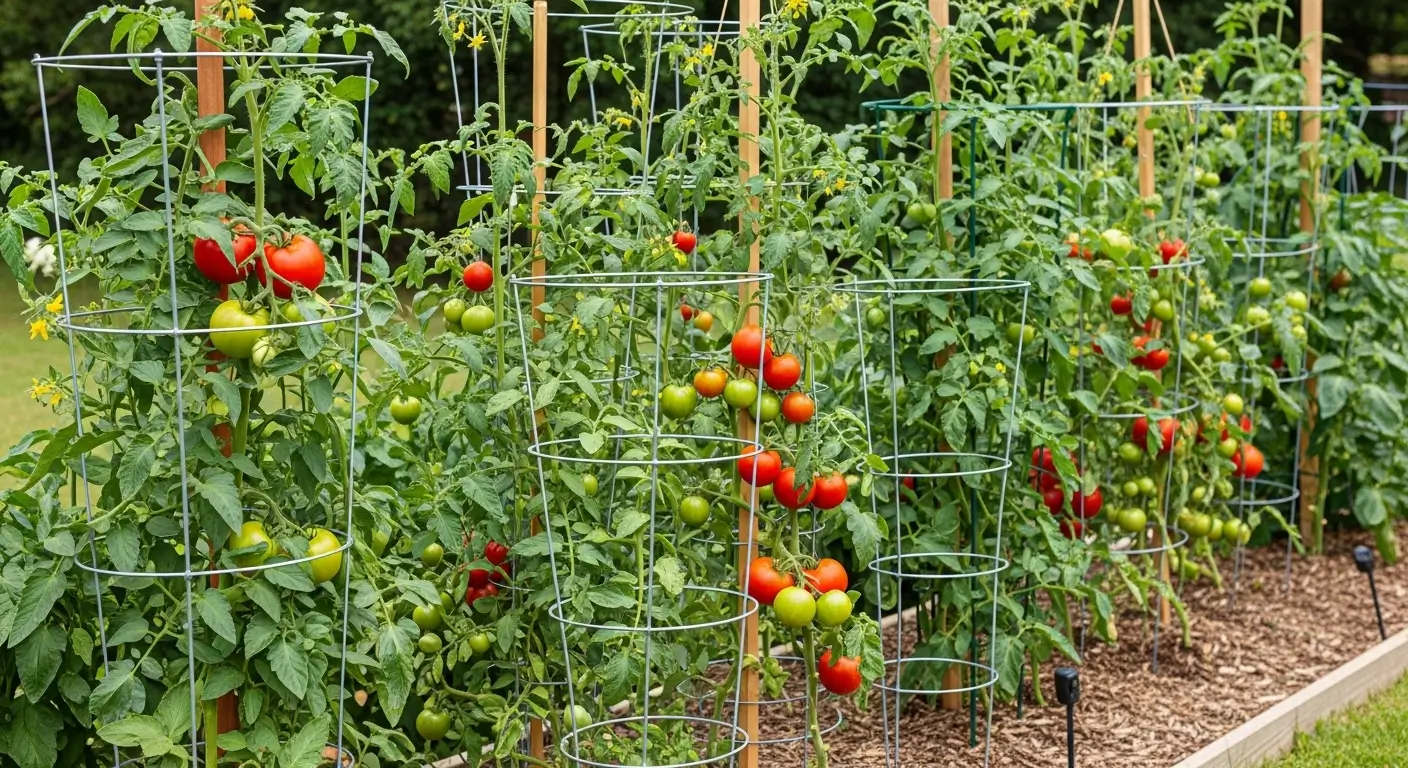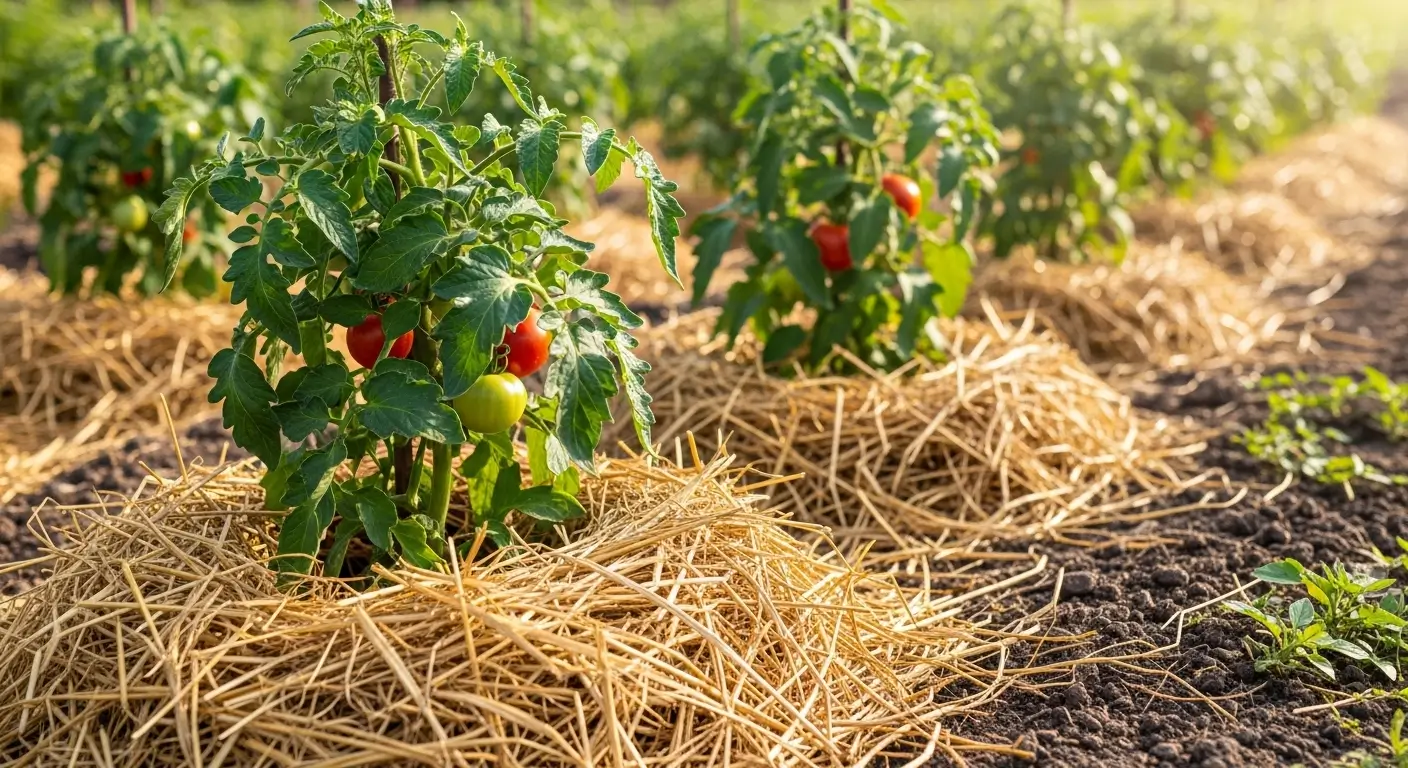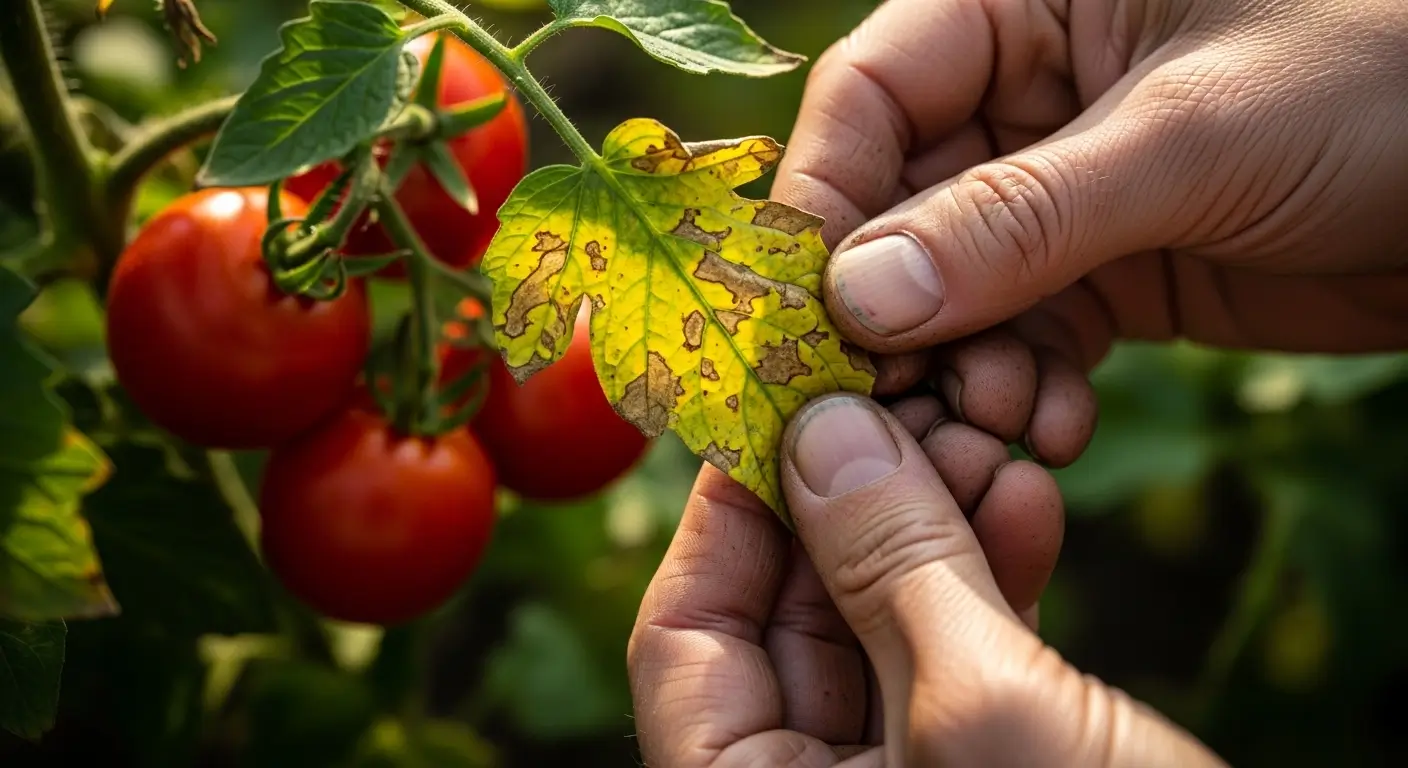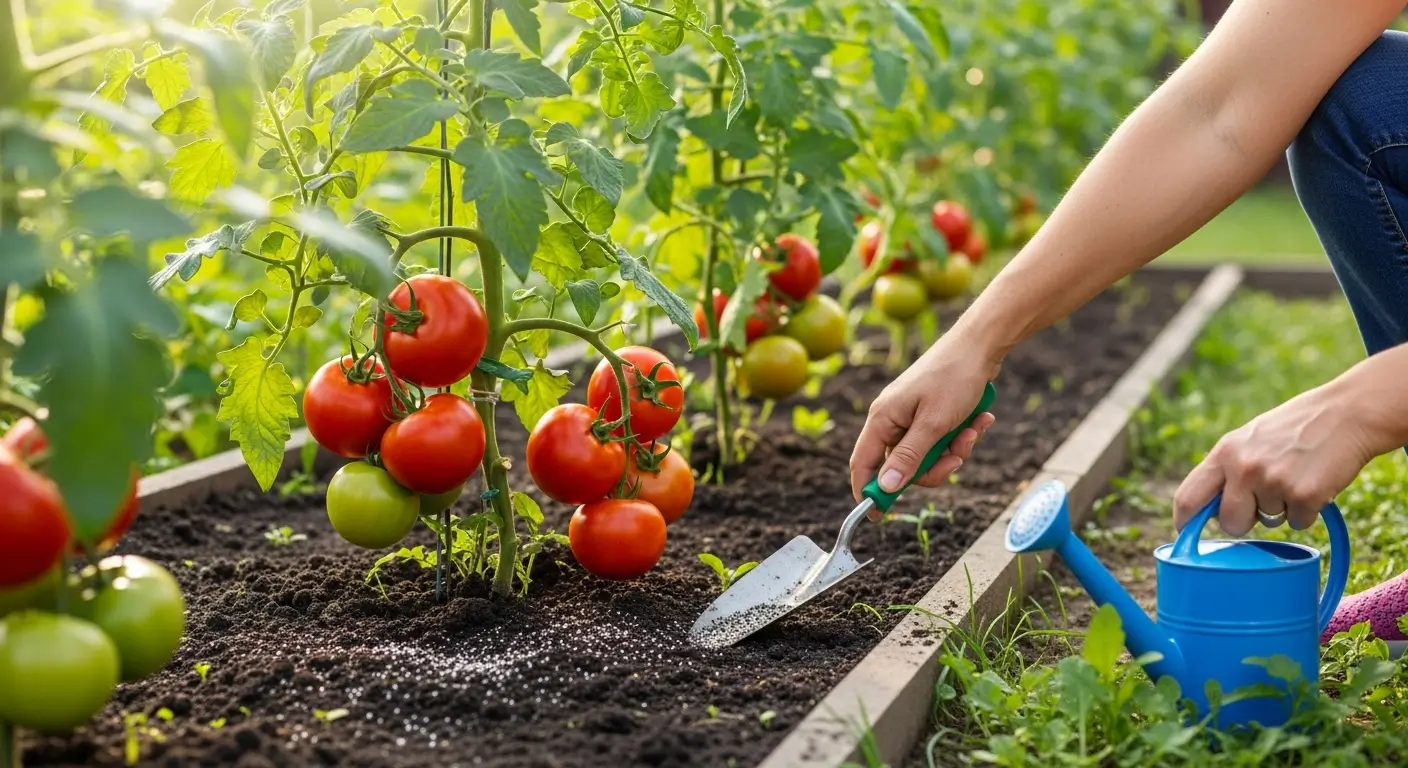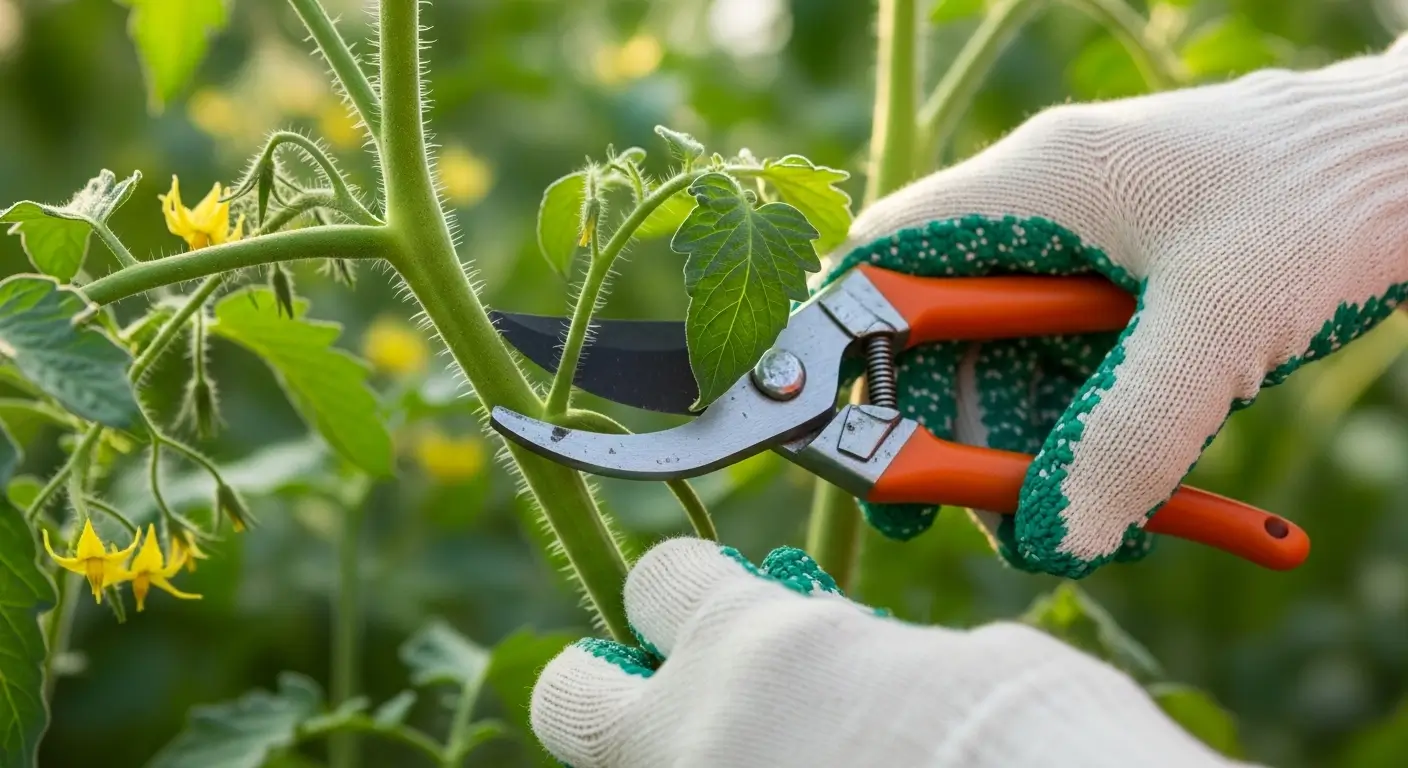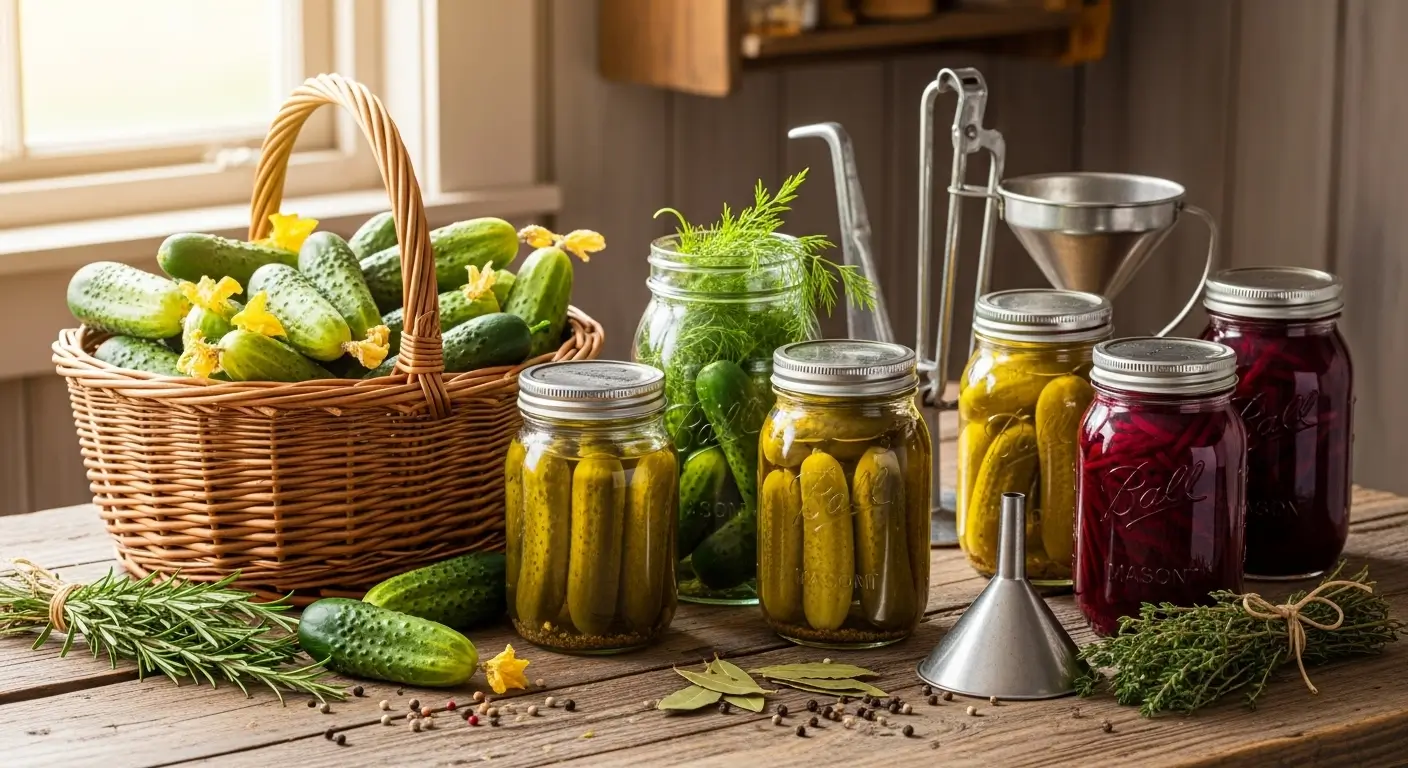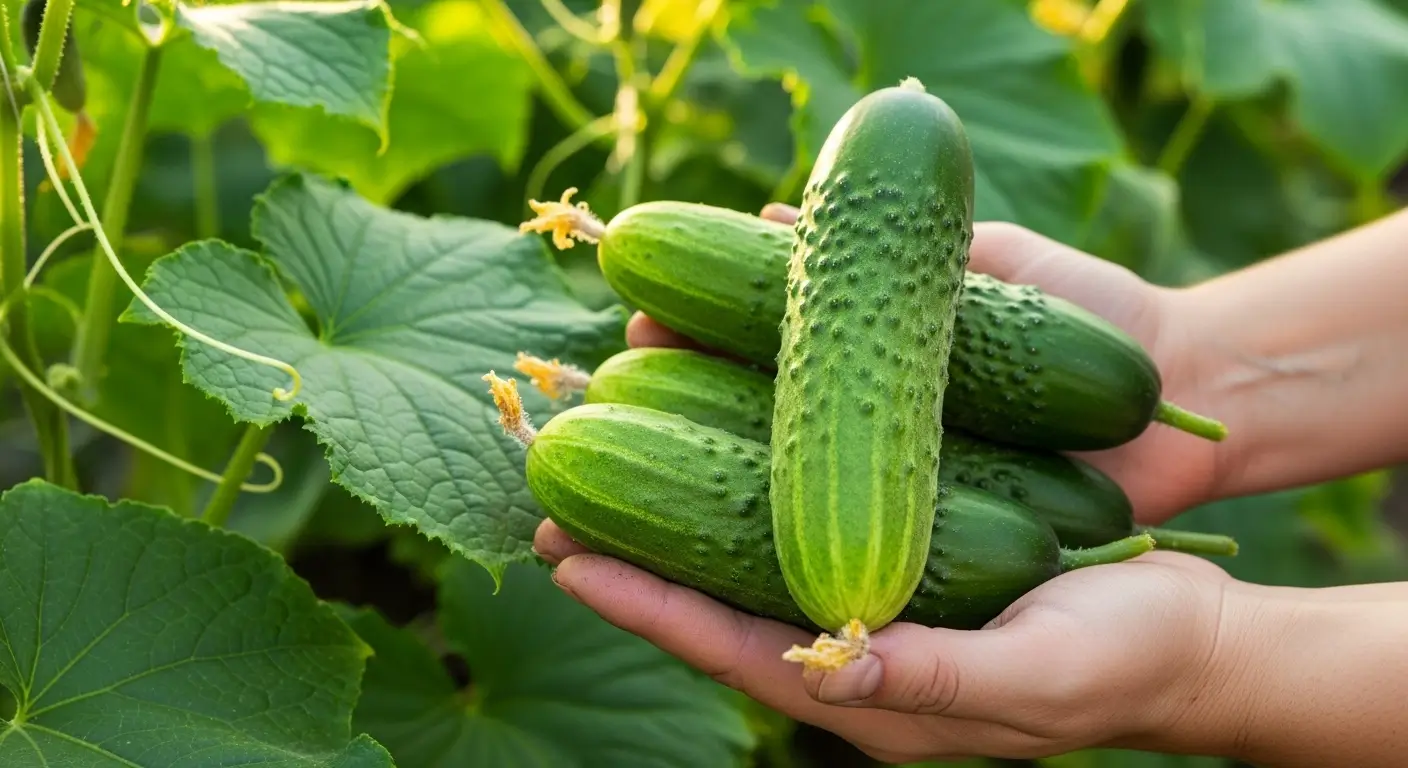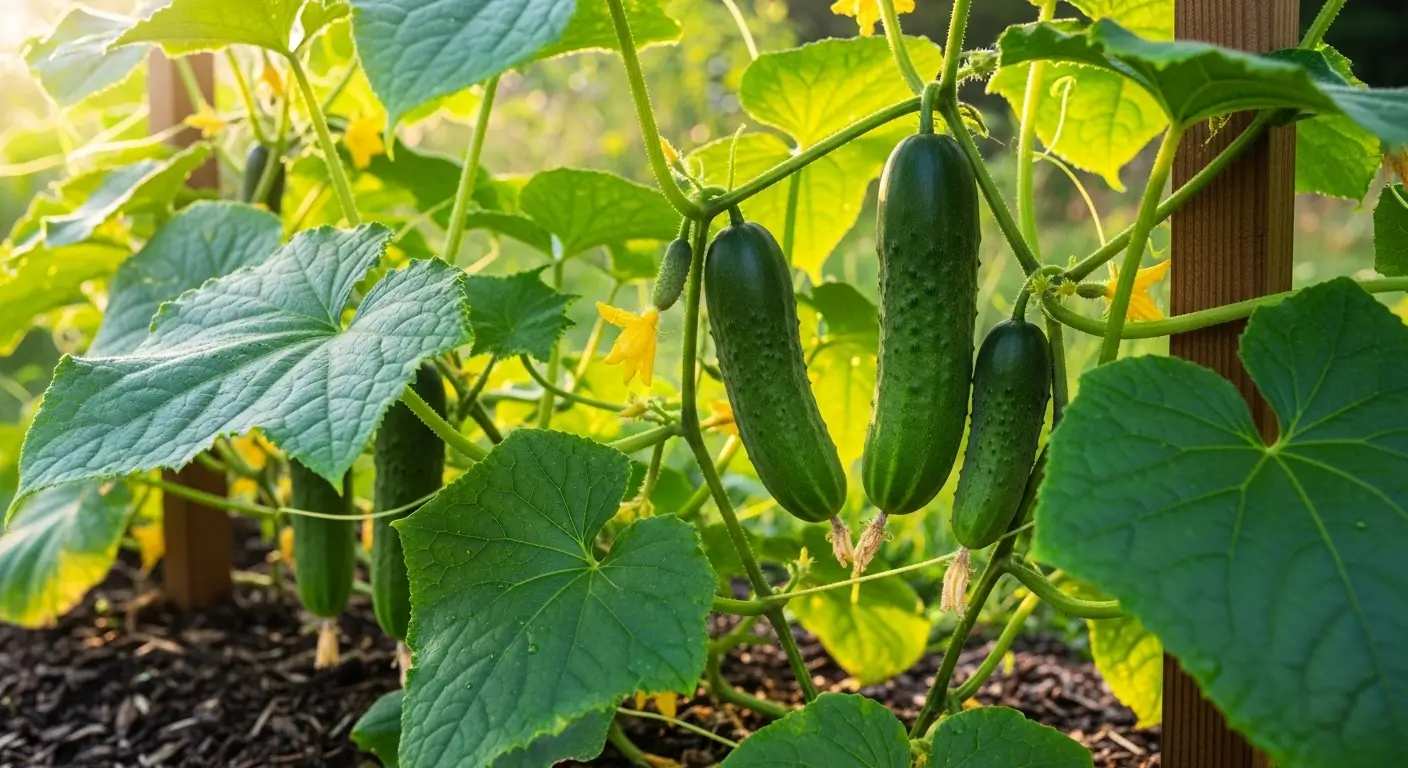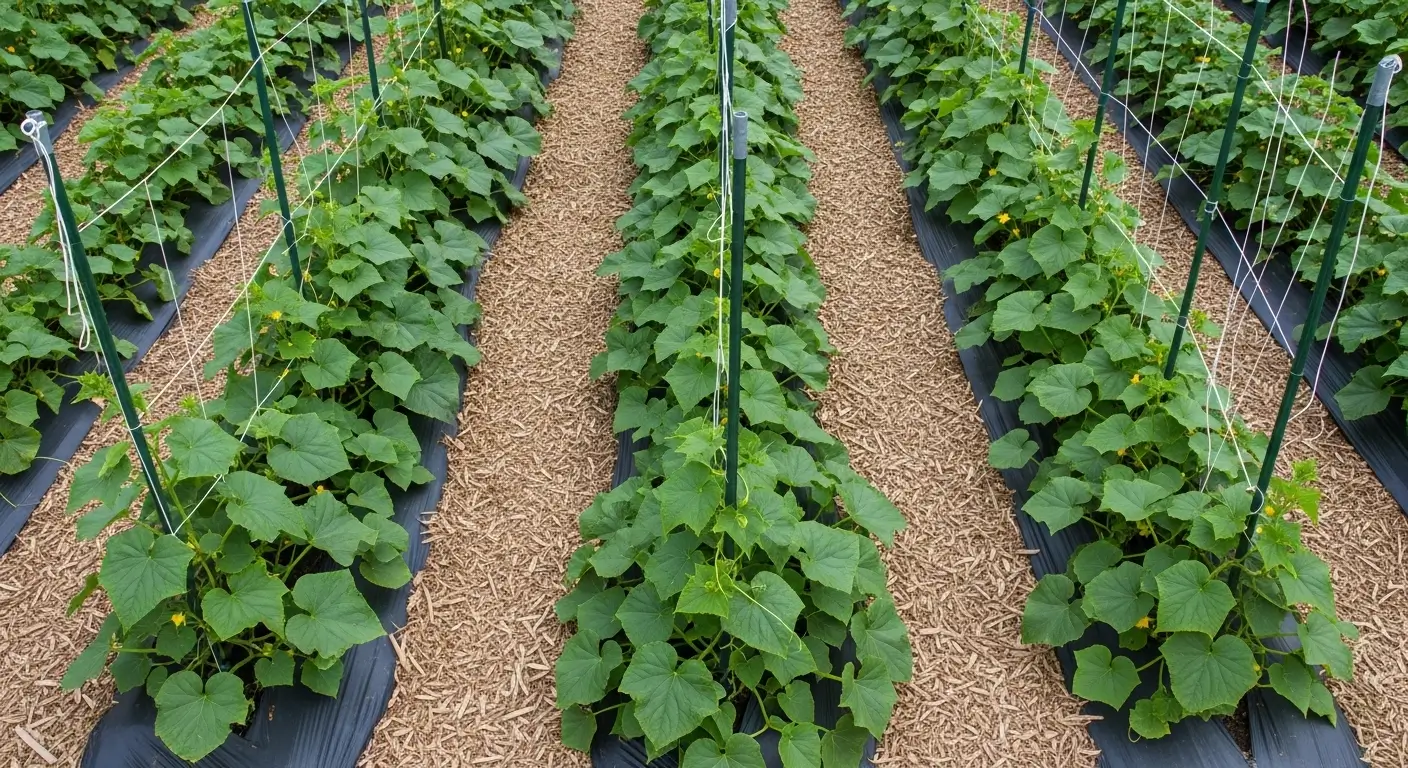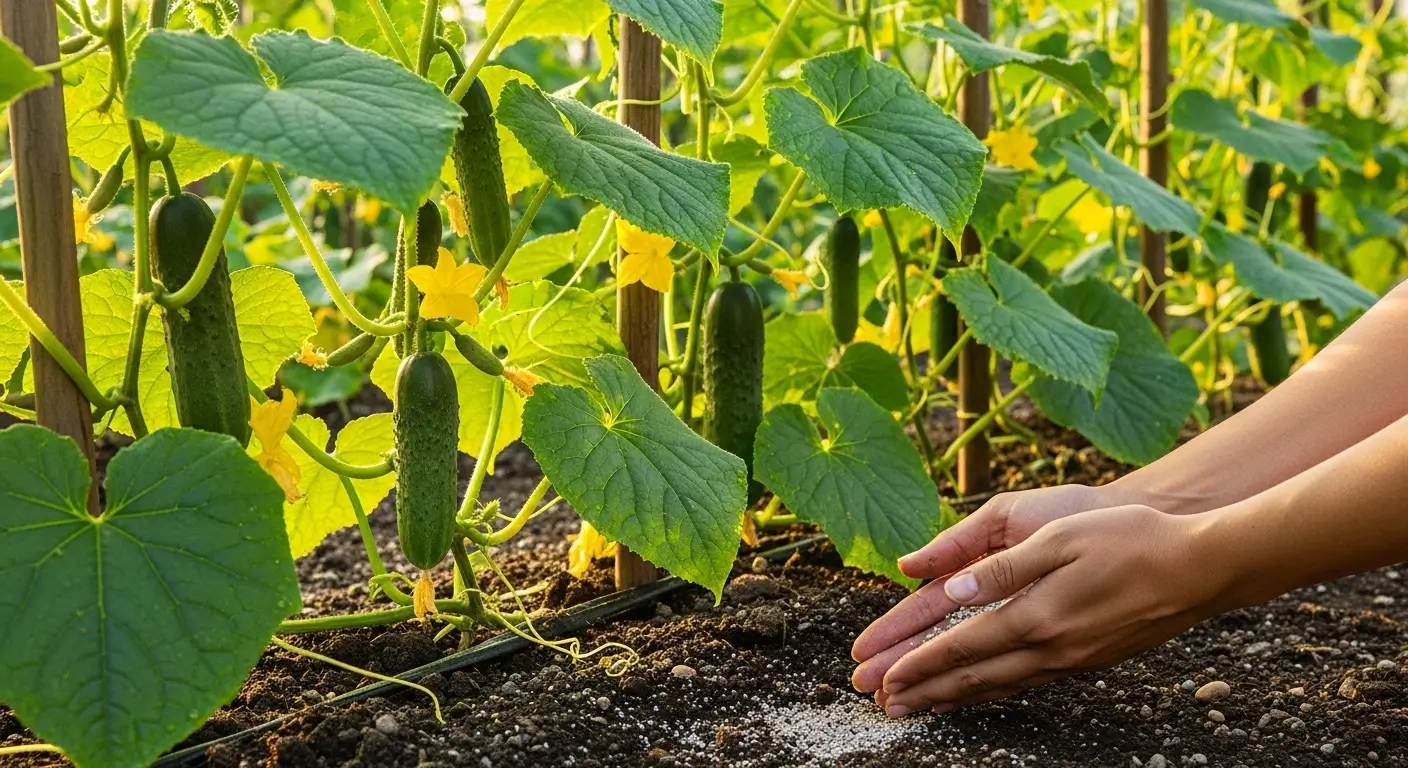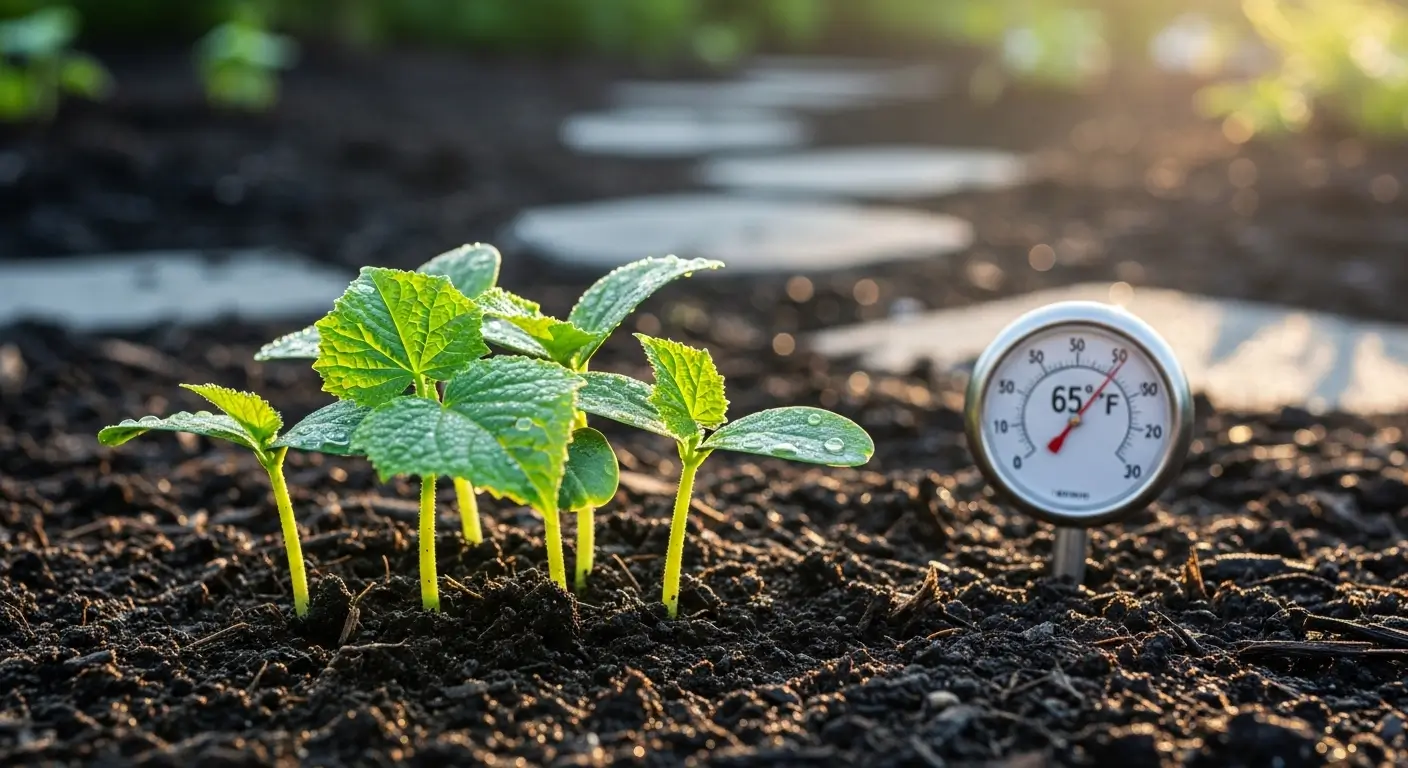Okay, here’s the thing about growing tomatoes – it’s not just about the tomatoes themselves. After messing around in my garden for fifteen years, I’ve figured out who your tomatoes hang out with makes a HUGE difference. And trust me, I’ve learned this the hard way. One time, I planted my beautiful heirloom tomatoes next to some black walnut trees and spent weeks wondering why they looked like they were having the worst day ever!
I’m gonna share all the good stuff I’ve discovered about tomato companion plants – the incredible plant friendships that’ll make you look like a gardening genius, plus the combos that are just… nope. Please don’t do it. Whether you’re working with raised beds, containers, or just throwing plants in the ground wherever they’ll fit, knowing what grows well with tomatoes is seriously a game-changer.
Table of Contents
Why Companion Planting with Tomatoes Actually Works
When I first heard about companion planting, I said, “Yeah, right, plants don’t have friends.” But then I tried it, and wow – it works! After years of experimenting, I’ve seen some fantastic results (and probably annoying my neighbors with all my garden talk).
Here’s the deal: plants are constantly chatting with each other through their roots, their leaves, and even the bugs they attract. Some plants are like that friend who always has your back – they’ll improve your soil, chase away the nasty bugs, or even make you taste better (looking at you, basil!). I’ve literally watched marigolds kick aphids to the curb in my tomato beds.
The thing is, tomatoes are high-maintenance. They eat a lot, they need their space for good airflow, and they’ve got some serious pest drama. But the right plant buddies can help with all that while making your garden look way cooler.
The Best Tomato Companion Plants (Tried and Tested)
Herbs That Love Living with Tomatoes
Basil is hands down my ride-or-die companion for tomatoes. Every year, I plant sweet basil around each tomato plant, and it’s like magic. The basil kicks out aphids, whiteflies, and those creepy hornworms, plus – and I’m not making this up – it actually makes the tomatoes taste better! And hello, having fresh basil right there when you’re picking tomatoes? Pizza night just got way easier.
Oregano and parsley are my other herb MVPs. Oregano smells so strong it basically confuses all the nasty bugs (they’re like “nope, too stinky here”), and parsley attracts those tiny beneficial bugs that eat aphids for breakfast. Pro tip: let some parsley flower at the end of the season – it turns into bug paradise, but the good kind of bugs.
Chives are another winner. I plant little clusters around my tomatoes, making everything healthier while adding a mild onion vibe. Plus, those purple flowers are Instagram-worthy!
Flowers That Make Perfect Tomato Neighbors
Marigolds are the most famous tomato buddies, and they’ve earned that reputation. I scatter French marigolds all through my tomato beds because they release this stuff that tells nematodes and other soil jerks to buzz off. And those bright orange and yellow flowers? They’re like little suns in your garden, bringing in all the good bugs.
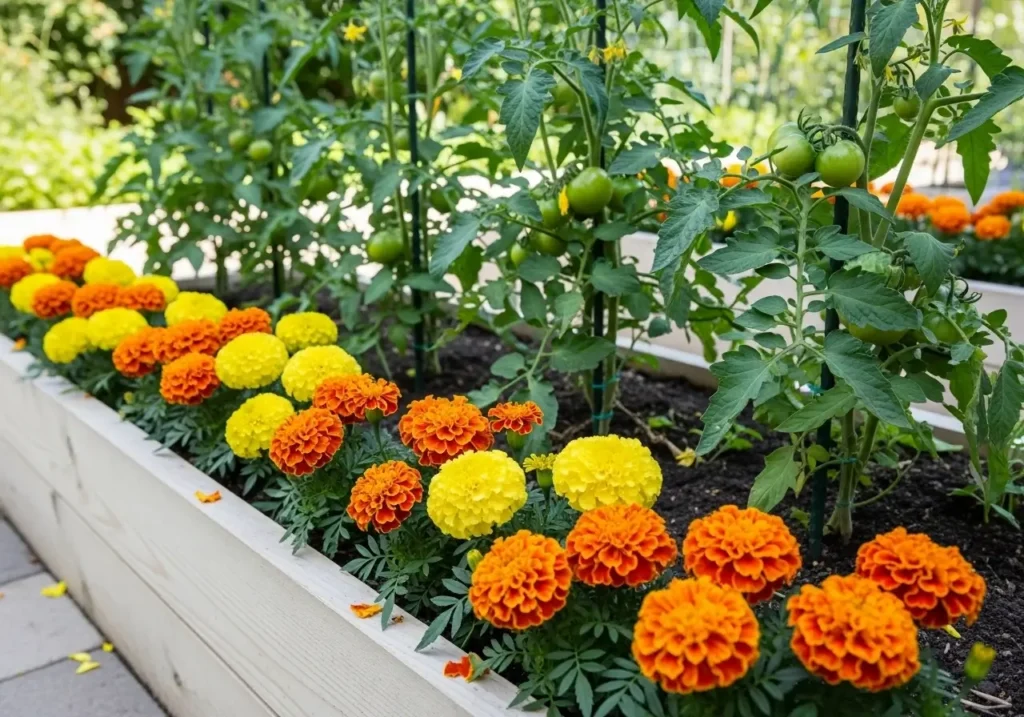
Nasturtiums are so clever – they’re basically pest decoys! All the aphids and cucumber beetles go straight for them instead of bothering my tomatoes. I let them sprawl around the edges of my beds, and those peppery leaves are actually really good in salads (fancy, right?).
Calendula has become my secret weapon. The petals are edible and look amazing in salads (your dinner guests will think you’re so fancy), plus they attract beneficial bugs and make everything grow better. I throw seeds down in spring, and they keep going all season.
Vegetables That Thrive Alongside Tomatoes
Peppers are like tomatoes’ cousins – they want the same hot, sunny spot and don’t fight for space since peppers stay compact. I always plant my sweet and hot peppers right next to my tomatoes. It’s like a little nightshade family reunion!
Carrots are perfect as living mulch around tomato plants. Their feathery tops don’t block any light, and their roots help break up hard soil. Bonus: Carrots grown near tomatoes always seem sweeter to me. They may be happier.
Lettuce and leafy greens are great space fillers early in the season. When my tomato babies are still tiny, I pack in lettuce and spinach around them. By the time the tomatoes needed more room, I’d already eaten all the greens. It’s like getting two gardens for the price of one!
Plants That Don’t Play Well with Tomatoes
Okay, time for the bad news. I’ve learned about these disasters, so you don’t have to repeat my mistakes!
The Brassica Family Problem
Cabbage, broccoli, cauliflower, and kale – basically anything in the cabbage family – are terrible tomato neighbors. I tried squeezing broccoli between my tomato rows one year, thinking I was super efficient. Both crops looked miserable! They’re basically fighting over the same nutrients, and nobody wins.
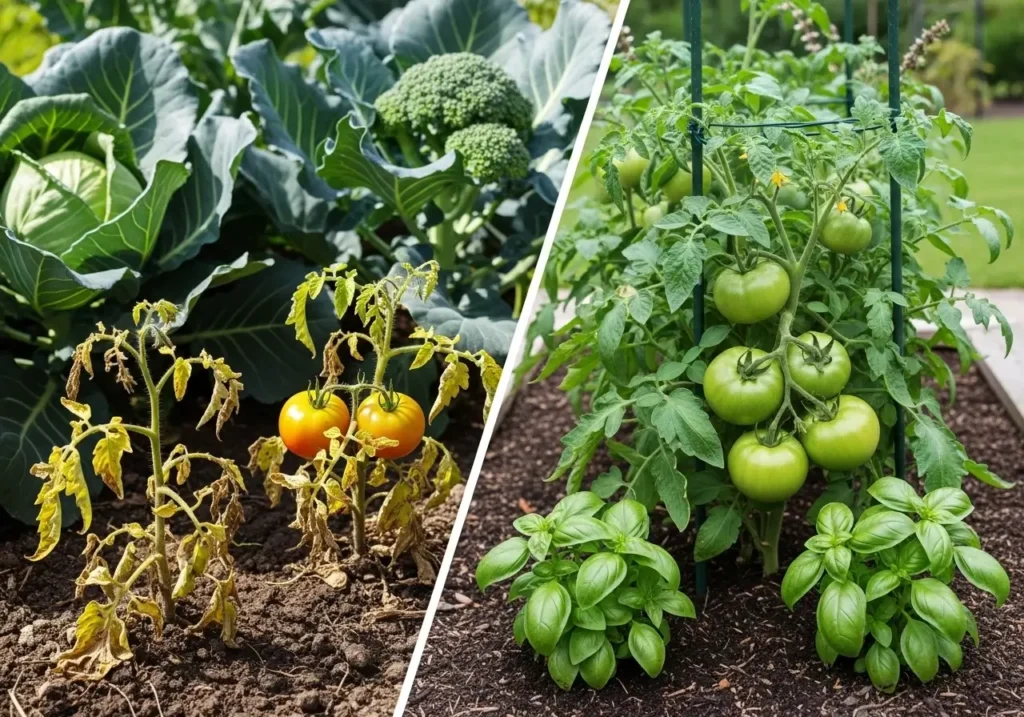
Walnut Trees (My Biggest Lesson Learned)
Black walnut trees are like that toxic friend who brings everyone down. They release this stuff called juglone, which is basically poison to tomatoes. I lost a whole bed of beautiful tomatoes in my second year because I planted too close to my neighbor’s walnut tree. The plants just looked sad and yellow, no matter what I did. Now I know – keep tomatoes at least 50 feet away from any walnut trees. Learn from my pain!
Fennel’s Antisocial Tendencies
Fennel is basically the loner of the plant world. It releases chemicals that tell other plants to stay away, including tomatoes. I learned this after wondering why nothing grew well near my fennel. Now, it has its own little corner where it can be antisocial and peaceful.
Corn Complications
Corn isn’t toxic to tomatoes, but they’re not great roommates. They both eat a lot and want all the nutrients, plus corn can shade out your tomatoes if you’re not careful. And they attract some of the same bugs, which is just asking for trouble.
Creating Successful Companion Plant Combinations
Here’s where it gets fun – figuring out how to arrange all these plants so they’re happy together. It’s like planning the perfect dinner party!
Spacing and Timing Strategies
I always think about how big everything’s gonna get and when I’ll need to harvest stuff. I plant quick things like radishes and lettuce early when my tomato babies are tiny. By the time the tomatoes required more space, I’d already eaten the fast stuff. It’s all about timing!
I also think about who’s tall and who’s short. My big tomato plants can give some afternoon shade to lettuce when it’s crazy hot. In contrast, little plants like herbs and carrots can hang out at the bottom without getting in anyone’s way.
The Three Sisters Approach (Modified for Tomatoes)
You know that Native American thing where they plant corn, beans, and squash together? I do a tomato version! Instead of those three, I’ll do tomatoes, basil, marigolds, or tomatoes, peppers, and nasturtiums. Everyone in the group helps the others – some chase bugs, some improve soil, some look pretty.
Special Considerations for Container Growing
If you’re doing the container thing (which is totally valid, by the way), companion planting gets trickier. You’ve got limited real estate, so you gotta be smart about it. Check out my tips on growing tomatoes in containers for more container-specific advice.
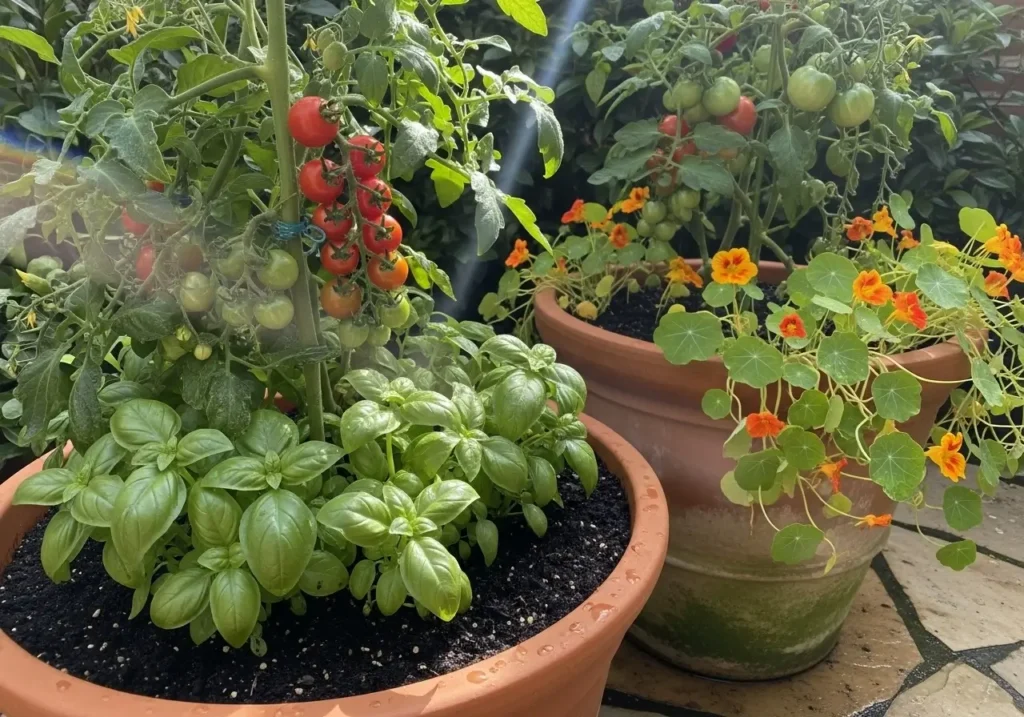
Basil is still my number one pick for container tomatoes – I can usually squeeze 2-3 basil plants around one tomato in a big pot. Chives work great too, especially around the edges where they won’t mess with the tomato’s roots.
For flowers in containers, I love nasturtiums that can spill over the sides (so pretty!), and compact marigolds that don’t hog space. I skip things like carrots in the same pot as tomatoes because they’re both root hogs.
Understanding the Science Behind These Partnerships
Okay, I’m not a scientist or anything, but understanding why this stuff works has helped me make better choices. Some plants literally release chemicals through their roots that help their neighbors – it’s called allelopathy, which sounds way fancier than it is. Basil might be doing this to make tomatoes taste better and grow healthier.
Other plants work by attracting good bugs or scaring off bad ones. Those strong-smelling herbs like oregano basically create a smell cloud that confuses pests trying to find your tomatoes.
Research from the University of Minnesota Extension confirms that basil and marigolds are scientifically proven to reduce thrip populations in tomatoes, and intercropping with basil may actually promote tomato growth – backing up what I’ve observed in my own garden!
Some companions are soil improvers. Beans can actually add nitrogen to the soil, though I’ve found they sometimes compete too much with tomatoes in small spaces.
Seasonal Companion Planting Strategy
I change up my companion game throughout the season. Early spring, when I’m just putting out baby tomato plants, I focus on cool-weather buddies like lettuce and radishes that I can harvest before summer heat kicks in.
As things warm up and my tomatoes get settled, I add the heat lovers like basil, peppers, and summer flowers. It’s like having different acts in a show – something’s always happening!
Late summer, I sometimes sneak in a second round of quick greens like arugula in spots where early companions have been harvested. The mature tomato plants actually provide lovely shade for these cool-weather crops.
Common Companion Planting Mistakes (And How to Avoid Them)
I’ve made pretty much every mistake possible, so let me save you some trouble:
Overcrowding is the big one. I used to try to cram every beneficial plant I could into my tomato beds. Bad idea! Tomatoes need airflow, or they get all kinds of nasty diseases. Now I give everything more space, and everyone’s happier.
Ignoring harvest timing bit me hard one year when I planted Brussels sprouts next to tomatoes. Come tomato harvest time, I had to bulldoze through the Brussels sprouts. Now I think about when I’ll need to get to each crop.
Forgetting about different needs can cause drama, too. Some plants are light eaters, while tomatoes are total gluttons. Usually, adding more compost and paying attention to watering fixes any competition issues.
Making Companion Planting Work in Your Garden
Here’s the real talk: what works awesome in my Illinois garden might need tweaking in your spot. Climate, soil, local bugs – it all matters.
Start simple with no-brainer combos like tomatoes and basil, or tomatoes and marigolds. Watch how your plants react, and don’t be scared to experiment. Some of my best discoveries happened when I tried weird combinations that weren’t in any book!
Keep notes about what rocks and what flops in your garden. I’ve got a little notebook that’s gotten pretty beat up over the years, but it’s saved me from repeating mistakes.
Remember, companion planting is just one piece of the puzzle. You still need good soil, proper spacing, enough water, and all that basic stuff for amazing tomatoes.
The most remarkable thing about companion planting isn’t just the better harvests (though those are pretty sweet). It’s creating a garden that feels alive and connected, where every plant has a job. When I walk through my tomato beds and see bees buzzing around the marigolds, smell that amazing basil in the evening, and watch nasturtiums tumbling everywhere, I know I’ve got something special going on.
Want to quickly check if a plant you’re considering is a good companion for your tomatoes? I’ve put together this handy tool based on all my years of trial and error (so you don’t have to make the same mistakes I did!). Just type in any plant name and see if it’ll be friends or foes with your tomatoes.
🍅 Check Your Companion Plant
Pretty cool, right? This little checker has saved me from so many gardening disasters over the years. I wish I’d had something like this when I first started out – it would’ve saved my poor tomatoes from that fennel fiasco!
For the full scoop on growing incredible tomatoes from start to finish, definitely check out my complete growing tomatoes guide.
Key Takeaways for Successful Tomato Companion Planting
- Start with the winners: Basil, marigolds, and nasturtiums are basically foolproof and do multiple good things
- Avoid the troublemakers: Keep tomatoes away from cabbage family plants, fennel, and walnut trees
- Think ahead: Plan for how big everything gets and when you’ll harvest
- Adapt to your situation: My garden isn’t your garden – adjust as needed
- Keep it simple: Start with 2-3 companion plants instead of trying to create some crazy plant orchestra
So what’s worked best for you in your tomato garden? I’m always curious to hear about other people’s successes (and spectacular failures!) in the comments. Every gardener’s got something to teach, and I’m always learning new tricks about these excellent plant partnerships!
Common Questions About Tomato Companion Planting
What are the best companion plants for tomatoes?
The absolute best tomato companion plants in my experience are basil (my #1 pick!), marigolds, and nasturtiums. Basil not only repels pests but actually makes tomatoes taste better – I plant it around every single tomato plant. Marigolds are pest-fighting powerhouses that deter nematodes, and nasturtiums act like pest magnets, drawing bad bugs away from your tomatoes. Other fantastic choices include oregano, parsley, chives, peppers, and carrots.
What plants should never be planted with tomatoes?
I’ve learned this the hard way! Never plant brassicas like cabbage, broccoli, or kale near tomatoes – they’re total nutrient hogs and will stunt your tomatoes. Fennel is the worst – it’s like that antisocial friend who makes everyone uncomfortable. And whatever you do, keep tomatoes at least 50 feet from black walnut trees! I lost an entire bed of beautiful tomatoes because of walnut toxicity. Corn isn’t great either since both plants are heavy feeders.
Does basil really make tomatoes taste better?
Yes! I was skeptical at first too, but after years of side-by-side testing, tomatoes grown with basil definitely taste more flavorful. There’s actually science behind this – research shows basil can improve tomato growth and reduce pest problems. Plus, having fresh basil right there when you’re harvesting tomatoes is so convenient for cooking. It’s honestly the easiest win-win in companion planting!
How close should I plant companion plants to tomatoes?
Great question! I plant basil about 6-8 inches from the base of tomato plants – close enough to share benefits but not so close they compete for root space. Marigolds can go anywhere in the bed since they’re not root competitors. For herbs like oregano and parsley, I give them about 12 inches from tomatoes. Remember, tomatoes need good airflow, so don’t overcrowd – I learned that lesson after dealing with too many fungal issues!
Can I use companion planting in containers?
Absolutely! Container companion planting is one of my favorite space-saving tricks. In a large pot with a tomato plant, I can usually fit 2-3 small basil plants around the edges. Chives work great too, and nasturtiums can trail beautifully over container edges. Just avoid root vegetables like carrots in the same container as tomatoes – they’ll fight for space underground. The key is choosing compact companions that won’t overwhelm your tomato’s root system.
